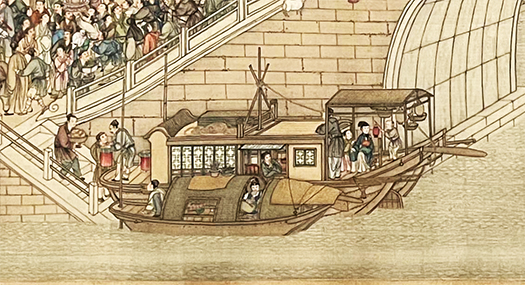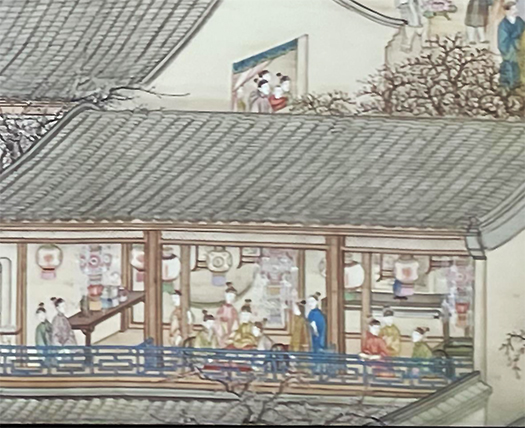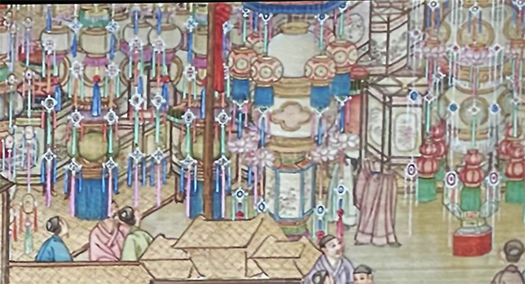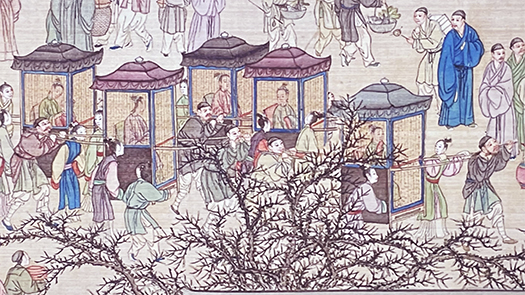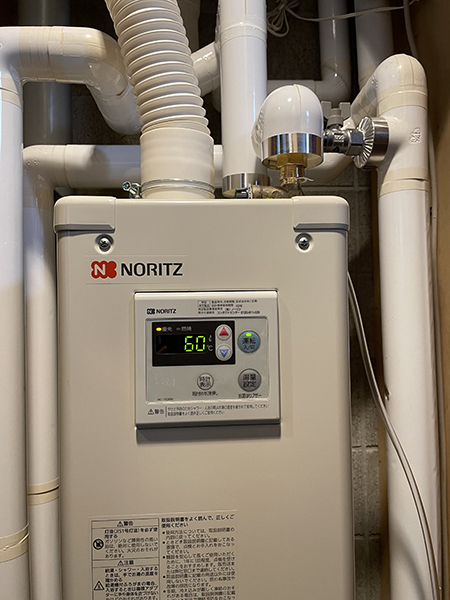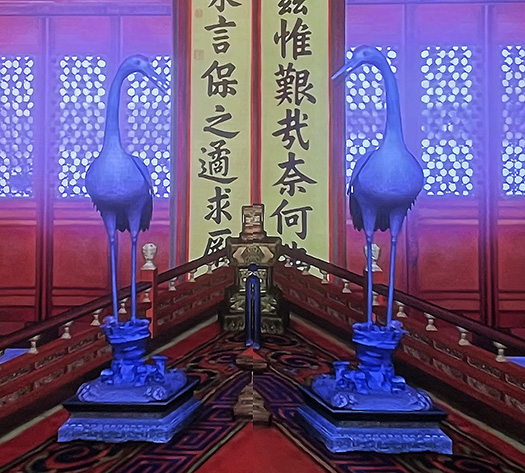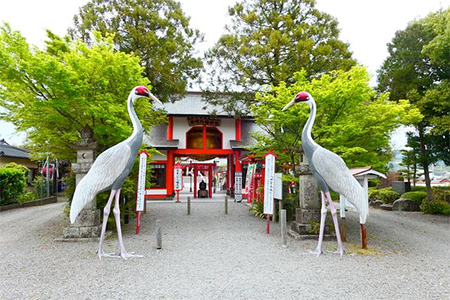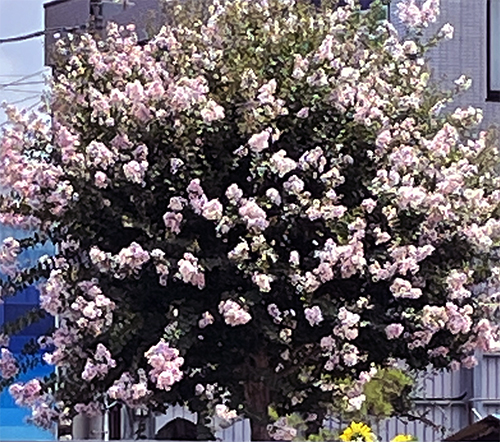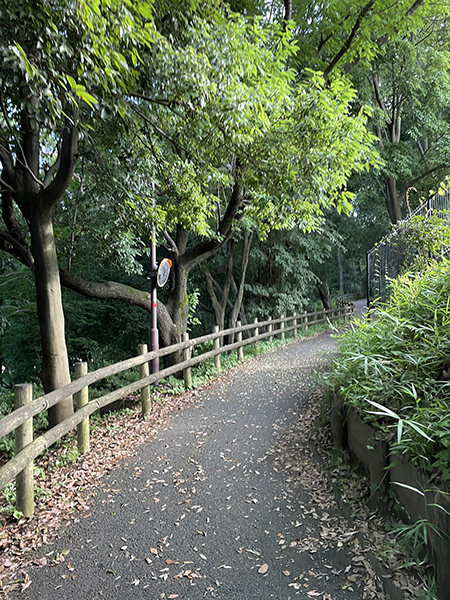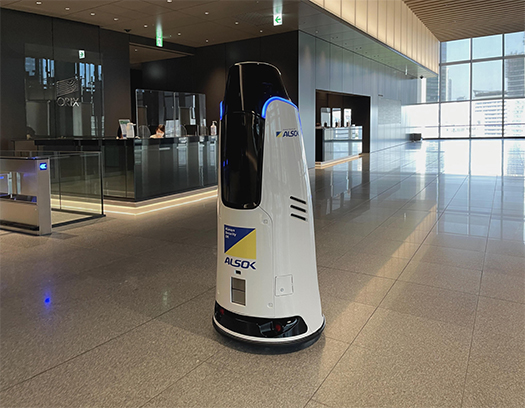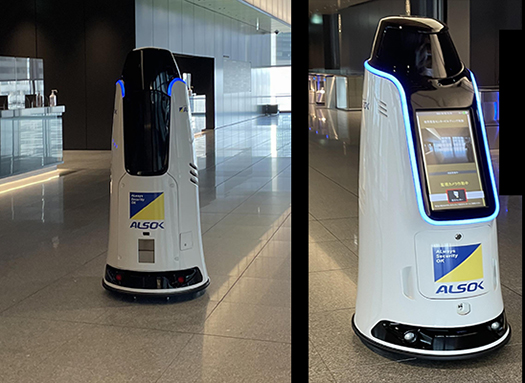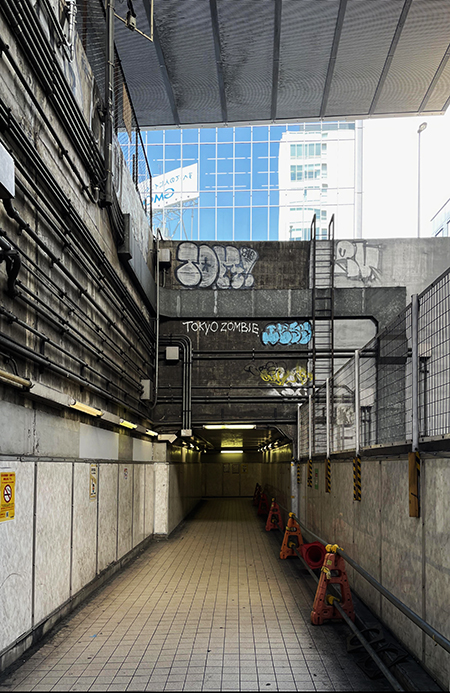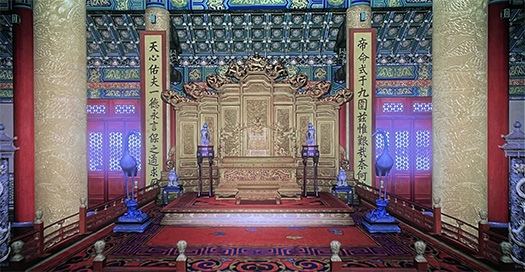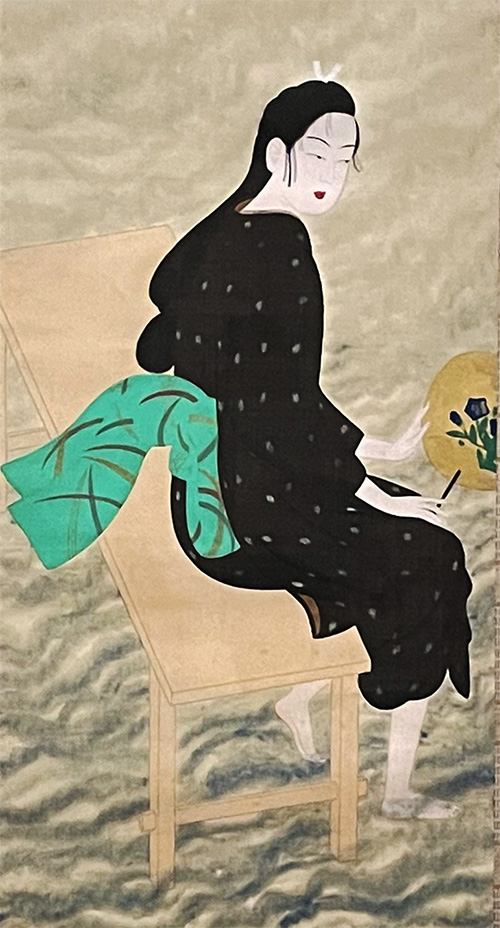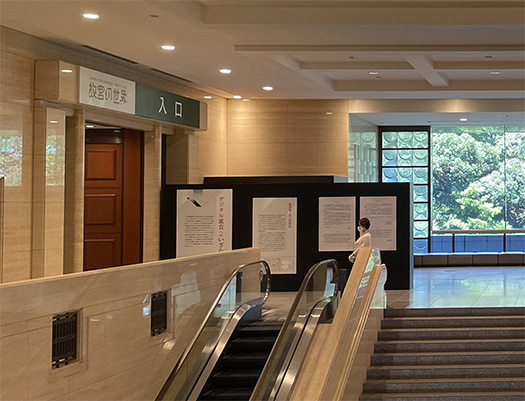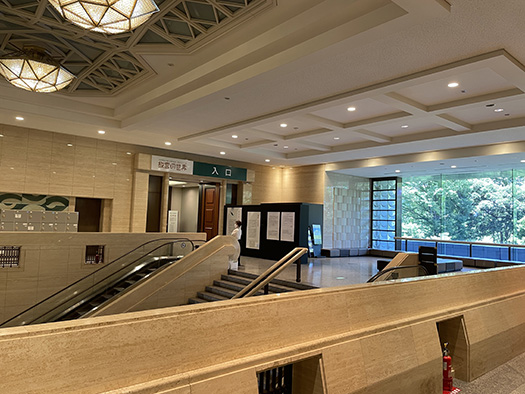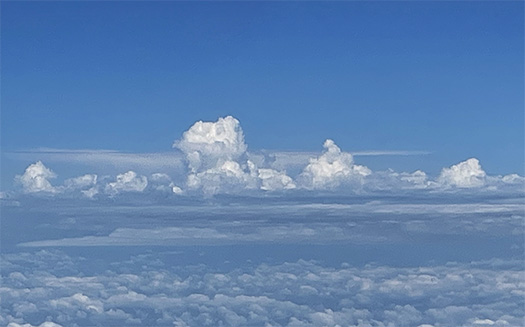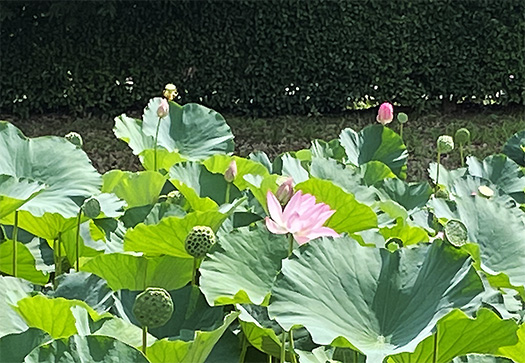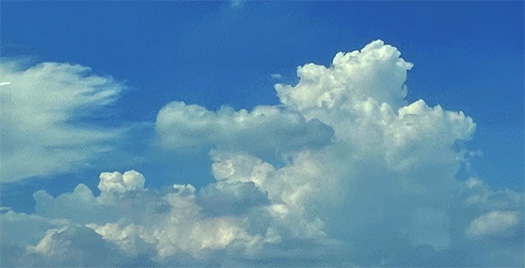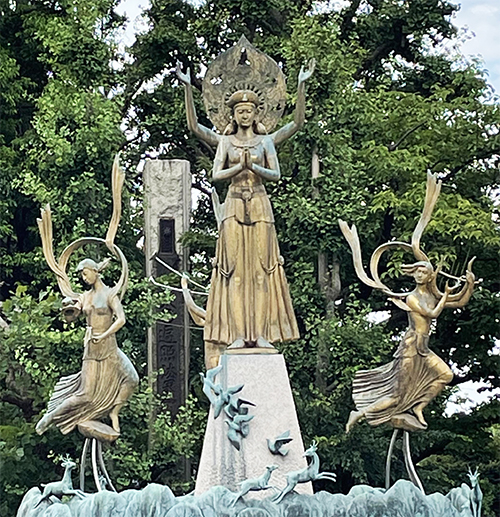
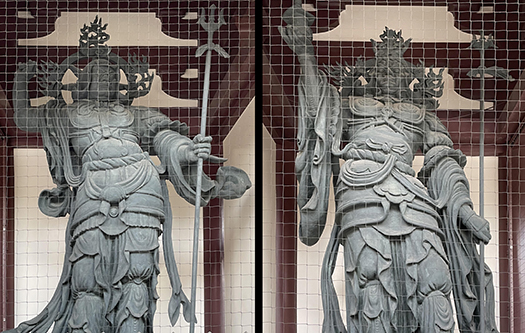
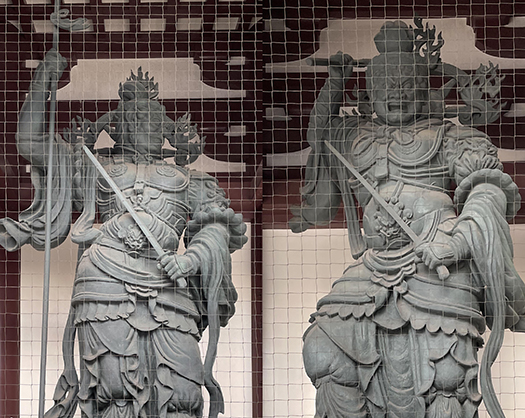
わたしは住宅建築を中心に人間文化を探求するのがライフワーク。
個人住宅がメインで通常の現代住宅の他に、
古民家で暮らしていた昔人と仮想的対話、想像力を巡らし、
いろいろな暮らしの痕跡をみつめるのが本旨と思っています。
そういうふうに「取材」を考えて行くと昔人の生き様に
いろいろな思惟が沸き起こって来る。
そういうなかで宗教はきわめて濃密なものと位置づけられる。
日本では神社と仏教という宗教が根付いている。
神社の場合は参詣の対象として塑像のような存在はあまりない。
あえていえば「注連縄」がそういうものに相当するか。
建築については出雲大社などの社が象徴的だけれど、
むしろ、大神神社のように自然の山体そのものが相当するように
根深く太陽神信仰、自然崇拝の祖型を強く感じる。
一方仏教では、多彩な建築群と多くの仏像群が尊崇を集めてきている。
わが家の家系は、一時期仕事上の関わりから浄土真宗に宗旨が変わり、
その後真言宗に復元している。いま現在は真言宗徒。
わたし自身は家の末っ子なのでそこまでの属性意識はありません。
多くの日本人と同様「つかず離れず」というスタンスだと思います。
歴史好きなので宗教施設から多くの「機微」を探れるとも思っています。
でも、学生時代に興味を持って「般若心経」を独習したことがあって
そこに描かれているお釈迦さんの宗教観自体には尊崇の気持ちはある。
さすがに仏教全宗派共通の教えだけに普遍性が強く感じられる。
加齢と共に東京出張のときには仏閣の周辺が朝の散歩で行ける地が
宿泊地域として選択するようになっている。
比較的に多いのが川崎周辺、そうですね、川崎大師・平間寺。
年寄りは早起きなので、ホテルを出て電車に乗って川崎大師駅へ。
参道を歩いて5分ほどで、早朝の「朝勤」に参加することができる。
まぁ別に読経に参加するのではないのですが、
多数のお坊さんたちの読経に合わせて、小さく般若心経を唱えさせてもらう。
盛大な香の香りと盛大な読経の音声で一種のカタルシスを感じる。
特段、願い事があるワケでも呪詛の願いがあるワケでもなく(笑)
いわば宗教的雰囲気に浸る時間を過ごせるということでしょうか。
日本人はこういう時間を普遍的に経験しながら生き暮らしてきた。
そういう平均的ニッポン人の感覚を維持したいということか。
自分でもよくわかりませんが、自己充足感は得られる。
1128年創建という平間寺・川崎大師。
弘法大師空海が海中に投げ込んだ仏像を、漁師で暮らしていた平間氏が
この川崎の近海で網にすくい上げたことを縁起とする寺。
浅草寺の縁起とも不思議とそっくりの創建譚。
その真偽とは関わりなく、それを信じ続けた900年を超える人々の営為に
なにか癒される思いがします。
English version⬇
Kawasaki Daishi, Statue of the Four Heavenly Kings and the Goddess of Peace.
Religion and Humanity. An opportunity to talk with the ancients. We are thinking beings. It is an opportunity to calmly accept the religious views of our ancestors and explore the history of the world. The statue of the Four Heavenly Kings and the Statue of the Goddess of Peace at Kawasaki Daishi.
My life’s work is an exploration of human culture with a focus on residential architecture.
In addition to the usual modern houses, I also work on the construction of private residences.
I also engage in virtual dialogues with the people of the past who lived in old houses.
My main purpose is to have a virtual dialogue with people who used to live in old houses, as well as ordinary modern houses.
When I think of “reporting” in this way, various thoughts about the way of life of the people of old come to me.
I think that the main purpose of this project is to explore the traces of the lifestyles of the people of the past.
In this context, religion is positioned as something extremely dense.
In Japan, the religions of Shinto shrines and Buddhist temples are deeply rooted.
In the case of shrines, there are not many plastic statues as objects of worship.
If I were to venture a guess, I would say that shimenawa (sacred straw ropes) are equivalent to such objects.
As for architecture, Izumo-taisha and other shrines are symbolic.
But, rather, the natural mountain itself, as in the case of Ogami Shrine, is equivalent to such a shrine.
I strongly feel the ancestral form of deep-rooted sun god belief and nature worship.
In Buddhism, on the other hand, a wide variety of architecture and many Buddhist statues have been revered.
My family’s religious affiliation was changed to Jodo Shinshu at one time due to work-related reasons, but was later restored to Shingon.
Later, it was restored to the Shingon sect. I myself am the youngest child in the family, so I have been a member of the Shingon sect for a while.
I myself am the youngest child in my family, so I am not conscious of that much of an attribute.
Like most Japanese people, I think I have a “stay close to the people” attitude.
I am also a history buff, so I think I can find many “subtleties” in religious sites.
However, when I was a student, I was interested in learning the “Heart Sutra” on my own.
I have a sense of reverence for the religious views of the Buddha himself as depicted in it.
As one would expect from a teaching common to all Buddhist sects, I feel a strong sense of universality.
As I get older, when I go on business trips to Tokyo, I choose a place where I can go for a morning walk around Buddhist temples and shrines.
I have come to choose places to stay where I can take a morning walk around Buddhist temples when I go on business trips to Tokyo.
The most common places are in the Kawasaki area, such as Kawasaki Daishi and Hirama-ji Temple.
Old people are early risers, so we left the hotel and took the train to Kawasaki Daishi Station.
A five-minute walk down the approach to the temple allows you to participate in the early morning “morning service.
Well, not really to participate in the sutra reading.
I am allowed to chant a small Hannya Shingyo (Heart Sutra) to the accompaniment of numerous monks reading the sutra.
The grand fragrance of the incense and the loud sound of the sutra chanting give me a kind of cathartic feeling.
I don’t have any particular wish or curse to make (laughs).
(laughs) I guess you could say that I can spend time immersed in a religious atmosphere.
Japanese people have lived their whole lives experiencing this kind of time universally.
Do you want to maintain this sense of the average Japanese person?
I am not sure myself, but I do feel a sense of self-sufficiency.
Hirama Temple and Kawasaki Daishi Temple were founded in 1128.
The statue of Buddha was thrown into the sea by Kobo Daishi Kukai, and Hirama, who lived as a fisherman
The temple is said to have its origin in the fact that the Hirama clan, who lived as fishermen, scooped up the Buddha image into a net in the waters near Kawasaki.
The tale of the founding of the temple is strangely similar to the legend of Sensoji Temple.
Regardless of its authenticity, the activities of the people who have believed in it for more than 900 years
I feel something healing in the work of the people who believed in it for more than 900 years.
Posted on 8月 9th, 2022 by 三木 奎吾
Filed under: 日本社会・文化研究 | No Comments »


